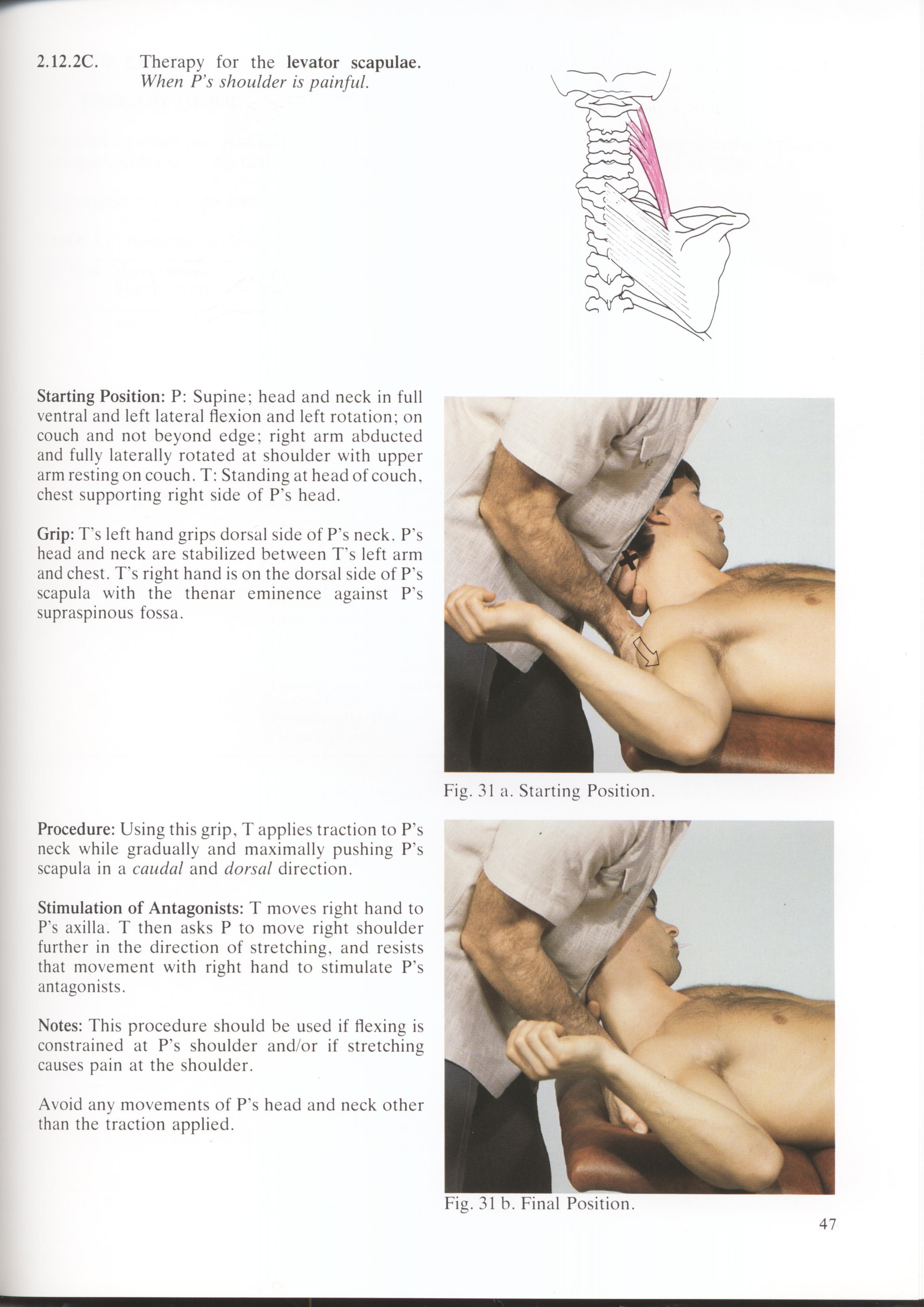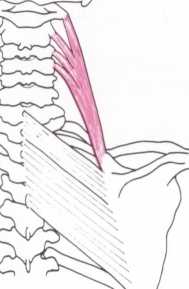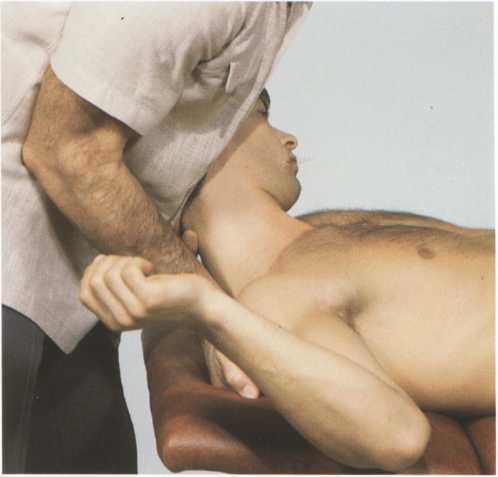47 (397)

2.12.2C.
Therapy for the levator scapulae.
When P’s shoulder is painful.

Starting Position: P: Supine; head and neck in fuli ventral and left lateral flexion and left rotation: on couch and not beyond edge; right arm abducted and fully laterally rotated at shoulder with upper arm restingon couch. T: Standing at head of couch, chest supporting right side of P's head.
Grip: Ts left hand grips dorsal side of P’s neck. P’s head and neck are stabilized between T's left arm and chest. T’s right hand is on the dorsal side of P’s scapula with the thenar eminence against P’s supraspinous fossa.
Procedurę: Using this grip, T applies traction to P's neck while gradually and maximally pushing P's scapula in a caudal and dorsal direction.
Stimulation of Antagonists: T moves right hand to P’s axilla. T then asks P to move right shoulder further in the direction of stretching, and resists that movement with right hand to stimulate P’s antagonists.
Notes: This procedurę should be used if flexing is constrained at P’s shoulder and/or if stretching causes pain at the shoulder.
Avoid any movements of P's head and neck other than the traction applied.


Fig. 31 b. Finał Position.
47
Wyszukiwarka
Podobne podstrony:
45 (422) 2.12.2A. Therapy for the levator scapulae. SHH Starting Position: P: Supine; head and neck
46 (413) 1 1 2.12.2B. Therapy for the levator scapulae. Alternative grip for patients with good shou
44 (440) 2.12.1. Therapy for the trapezius, descend- ing part. Starting Position:
78 (191) 5.2.2. Therapy for the interossei palmares. (Stretching of interosseus palmaris IV shown.)
81 (175) 3.10.2A. Therapy for the scalenus anterior and medius. Starting Position: P: Supine; head a
82 (183) 3.10.2B. Therapy for the scalenus anterior and medius. AIternative grip. Starting Position:
83 (175) 3.10.3. Therapy for thc scalenus posterior. Starting Position: P: Supine; head and neck bey
62 (264) 3.3.12. Therapy for the flexor carpi radialis. Starting Position: P: Supine; arm flexed app
56 (314) 3.3.6. Therapy for the extensor indicis. Starting Position: P: Supine; forearm flexed and f
57 (309) 3.3.7. Therapy for the extensor digitorum communis. (Middle finger only). Starting Position
58 (288) 3.3.8. Therapy for the extensor digiti minimi. Starting Position: P: Supine; arm flexed app
59 (281) 3.3.9. Therapy for the supinator. Starting Position: P: Supine; arm flexed approx-imately 9
60 (279) 3.3.10. Therapy for the extensor carpi ulnaris. Starting Position: P: Supine; arm flexed ap
61 (266) 3.3.11. Therapy for the flexor carpi ulnaris. Starting Position: P: Supine; arm flexed appr
64 (249) 3.3.14. Therapy for the pronator teres, humerał head. Starting Position: P: Supine; arm fle
65 (244) 3.3.15. Therapy for the pronator teres, ulnar head and the pronator quadratus. Starting Pos
66 (236) 3.3.16. Therapy for the palmaris longus. Starting Position: P: Supine; shoulder abducted an
69 (223) 4.2.1. Therapy for the extensor pollicis longus. Starting Position: P: Supine; upper arm an
70 (225) Therapy for the flexor digitorum profundus. Fig. 50 a. Starting Position. 4.3.1. Starting P
więcej podobnych podstron